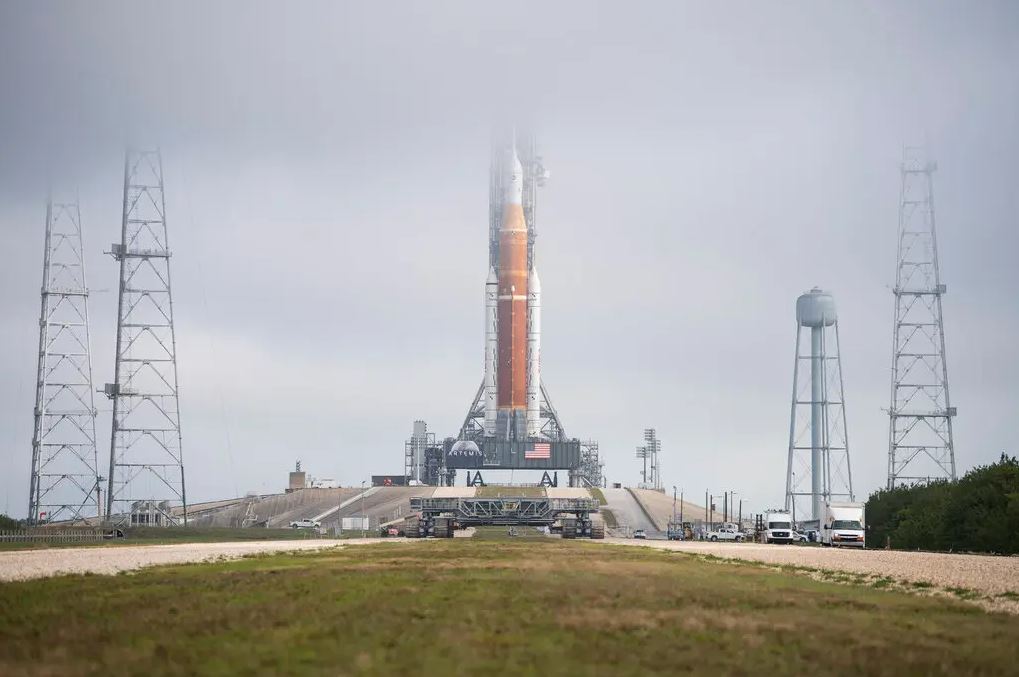If NASA officials have their way, it won’t only be SpaceX that will be travelling to the moon. That may be a boost to Jeff Bezos’s ambitions to establish a space colony.
As part of Artemis, NASA’s mission to return men to the moon, the agency sought to recruit two businesses in 2019 to deliver the landers that would transport astronauts from lunar orbit to the moon’s surface. The two companies were selected by NASA. However, because to a lack of funding from Congress, the government made the decision in April of last year to award just one contract, which went to SpaceX.
Following NASA’s recent method of pursuing fixed-price contracts, establishing some specifications but fostering creativity by enabling private businesses to come up with their own designs that fulfil the agency’s goals while competing on price, the lunar landers will follow a similar path. This method resulted in the development of SpaceX’s capsule, which transports humans to and from the International Space Station. In the past, NASA was normally in charge of the development of rockets and spacecraft, and corporations were compensated for carrying out the plans, which were often carried out at far higher rates.
Several firms, including Blue Origin, the rocket company founded by Amazon founder Jeff Bezos, and Dynetics, a military contractor, filed formal challenges with the federal Government Accountability Office after SpaceX was chosen the only winner in the competition last year. In comparison to SpaceX, Blue Origin’s plan was twice as expensive, while Dynetics’ proposal was even more expensive.
Blue Origin and Dynetics, as well as any other firms interested in submitting bids, now have a second opportunity to do so. A second human landing system lander, according to Lisa Watson- Morgan, manager of NASA’s human landing system programme, will be selected by the agency by early next year.
The news was likewise greeted with enthusiasm by Blue Origin. As the business said in a press release, “Blue Origin is delighted that NASA is stimulating competition by acquiring a second human lunar landing system.” “Blue Origin is ready to compete and is strongly dedicated to the success of Artemis,” said the company’s president.
There will be greater payload and longer stays on the moon’s surface required for the second lander, indicating the intention for more ambitious missions on the moon in the future.
In addition, Ms. Watson-Morgan said that NASA will negotiate with SpaceX within the terms of its current contract in order to create a lander that would match the additional standards.
NASA’s road to returning people to the moon has been a long and winding one, and the current aim of 2025 for establishing fresh American footprints on the moon looks to be an excessively optimistic goal for the agency.
The Space Launch System, a massive rocket, has finally arrived at the Kennedy Space Center in Florida, where it will remain for the time being until it is ready to be launched. During a practise countdown scheduled for next month, NASA will fuel the rocket but refrain from turning on the engines. The rocket will then be returned to the Vehicle Assembly Building, which is effectively a very tall garage for rockets, where it will undergo final preparations for a crewless test launch named Artemis 1, which may take place as early as the summer of 2018. This mission would fly an Orion spacecraft around the moon and return to Earth.
NASA’s second Artemis mission will be the first in which humans will travel in the Orion crew capsule, which will be attached to the S.L.S. rocket’s upper stage. That journey, which is scheduled to take place in May 2024, would go into orbit around the moon before returning to the Earth’s atmosphere.
The first lunar landing would take place no sooner than 2025, during the Artemis 3 mission. Four astronauts would once again go to lunar orbit on an Orion spacecraft, where they would dock with the SpaceX Starship spaceship, which would be ready for them when they arrived. In addition to the first woman and first person of colour, NASA says that two more astronauts would be transported to Starship and then land near the moon’s south pole, where they would spend roughly a week on the lunar surface.
NASA has given SpaceX permission to launch a series of Starship prototypes from its facility in South Texas to an altitude of around six miles in order to demonstrate how the vehicle will belly flop after reentering the atmosphere in order to slow down and then land vertically. After four unsuccessful tries, one of the prototypes was finally successful in landing in May. It is anticipated that SpaceX will launch the first Starship mission into space in the coming months.
President Donald J. Trump has resurrected the idea of sending humans to Mars once again during his term. National Aeronautics and Space Administration officials have stressed, both then and again, under the Biden administration, that the goal this time is not to complete a single mission, but rather to kick off a series of bigger human expeditions of the moon and ultimately further out into space.
NASA is attempting to transform that ray of optimism into a long-term effort with its statement on Wednesday.

